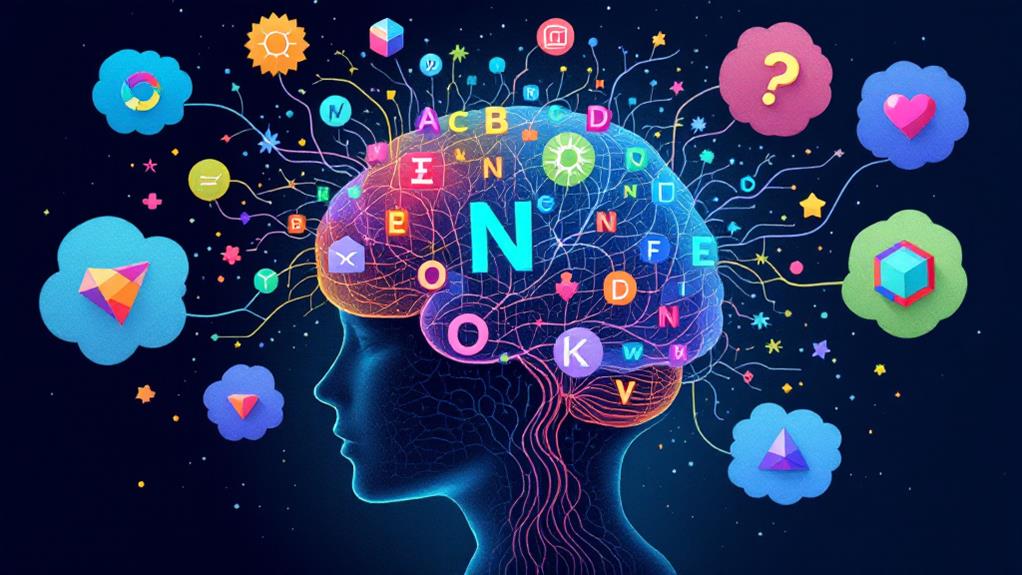The History of Linguistics: How We Came to Study Language

The history of linguistics spans millennia, from ancient civilizations' curiosity about language to today's advanced computational approaches. You'll find that early inquiries by Greek philosophers set the stage for systematic language study. During the Middle Ages and Renaissance, scholars probed into manuscript analysis and debated meaning. The Enlightenment saw the rise of comparative linguistics, leading to structuralism and Chomsky's revolutionary ideas. Modern linguistics encompasses cognitive, social, and anthropological viewpoints. Computational methods have altered the field, enabling unparalleled analysis of language data. This expedition through time reveals how our understanding of language has progressed, shaping our perception of human communication and cognition.
Ancient Beginnings
Curiosity about language has ancient roots. You might be surprised to learn that humans have been pondering the nature of communication for thousands of years. Ancient civilizations like the Egyptians, with their intricate hieroglyphics, were among the first to develop complex writing systems. These early attempts at codifying language laid the groundwork for future linguistic study.
As you delve deeper into the ancient beginnings of linguistics, you'll discover that early oral traditions played a crucial role. Many cultures passed down knowledge through spoken word, leading to a heightened awareness of speech patterns and language structure. This oral focus encouraged early thinkers to contemplate the power and mechanics of language.
Ancient Greek philosophers, such as Plato and Aristotle, were among the first to formally analyze language. They debated whether words were naturally connected to their meanings or if this connection was arbitrary. These discussions sparked a lasting interest in the relationship between language, thought, and reality. As you investigate further, you'll find that these ancient inquiries set the stage for the systematic study of language that would emerge centuries later.
Medieval Language Studies
As Europe entered the Middle Ages, language studies took on new dimensions. You'd find scholars focusing on medieval manuscript analysis, meticulously examining ancient texts to uncover linguistic patterns and preserve knowledge. This period saw the rise of monastic scriptoria, where monks painstakingly copied and studied religious texts, inadvertently contributing to language preservation and analysis.
Scholastic language philosophies emerged during this time, with thinkers like Thomas Aquinas and William of Ockham debating the nature of meaning and the relationship between words and concepts. You'd see an increased interest in the study of grammar, with scholars developing complex systems to analyze Latin and other languages.
The medieval period also witnessed the gradual shift from Latin to vernacular languages in literature and scholarship. You'd notice the beginnings of comparative linguistics as scholars started to recognize similarities between different languages. While progress in linguistics during this era might seem slow by modern standards, it laid essential groundwork for later developments. The medieval focus on textual analysis and philosophical inquiry into language would significantly influence the field's future direction.
Renaissance and Enlightenment Developments

The Renaissance ushered in an innovative chapter for linguistics, building on the foundations laid during the medieval period. You'll find that renaissance humanism's impact on language studies was profound, as scholars turned their attention to classical texts and began comparing ancient languages with contemporary ones. This renewed interest in Greek and Latin led to more systematic approaches to grammar and vocabulary.
As you investigate this era, you'll uncover that the 16th and 17th centuries saw significant advancements in linguistic thought. Scholars like Lorenzo Valla and Joseph Justus Scaliger developed methods for analyzing language change over time. The invention of the printing press also revolutionized the spread of linguistic knowledge.
Moving into the Enlightenment, you'll notice enlightenment philosophers' contributions to linguistics becoming increasingly important. Thinkers like John Locke and Gottfried Wilhelm Leibniz explored the relationship between language and thought, laying the groundwork for modern linguistic philosophy. During this period, you'll also see the emergence of comparative linguistics, with scholars like Sir William Jones proposing connections between Indo-European languages. These developments set the stage for the scientific study of language in the 19th century.
Comparative Philology
Scholars in the 19th century ushered in a fresh chapter of linguistic study with the rise of comparative philology. This field focused on comparing and analyzing languages to uncover their historical relationships and evolution. You'll find that the historical development of comparative philology was closely tied to the discovery of Sanskrit and its similarities to European languages.
Key figures in comparative philology included Sir William Jones, who proposed the idea of a common ancestor language for Sanskrit, Greek, and Latin. Franz Bopp further developed this concept, establishing systematic comparisons between Indo-European languages. Jacob Grimm, known for Grimm's Law, contributed to understanding sound changes in Germanic languages.
As you investigate this period, you'll notice how comparative philologists meticulously documented sound correspondences and grammatical similarities across languages. Their work laid the foundation for modern historical linguistics and the reconstruction of proto-languages. The field's influence extended beyond academia, shaping ideas about language families and cultural connections. Comparative philology's methods and findings continue to inform linguistic research today, helping you better comprehend the complex tapestry of human language development.
Structuralism in Linguistics

While comparative philology focused on historical relationships between languages, structuralism in linguistics emerged as a revolutionary approach in the early 20th century. Pioneered by Ferdinand de Saussure, this new viewpoint shifted the focus from language evolution to examining language as a system of interconnected elements.
You'll find that structuralism emphasizes synchronic analysis, which studies language at a specific point in time, rather than diachronic analysis, which traces changes over time. This construct views language as a structured system where each element's meaning is determined by its relationship to other elements.
Structuralists introduced key concepts like the distinction between langue (the abstract system of language) and parole (individual speech acts). They also investigated the arbitrary nature of linguistic signs, where the connection between a word's sound and its meaning is largely conventional.
This model influenced various fields beyond linguistics, including anthropology, literary criticism, and psychology. By examining language as a self-contained system, structuralism paved the way for modern linguistic theories and methodologies, revolutionizing how we apprehend and analyze human communication.
Chomsky's Generative Grammar
How did linguistics undergo another seismic shift in the mid-20th century? Enter Noam Chomsky, whose revolutionary model of generative grammar reshaped the field. Chomsky challenged the prevailing behaviorist views, arguing that language acquisition isn't merely learned through stimulus-response, but is an innate human capacity.
You'll find that Chomsky's theory proposes a universal grammar, a set of rules common to all languages. This concept suggests you're born with the ability to learn any language, thanks to an innate language acquisition device in your brain. Chomsky's work emphasizes the creative aspect of language use, showing how you can generate an infinite number of sentences from a finite set of rules.
Generative grammar focuses on the underlying structures of language, distinguishing between surface structure (what you actually say) and deep structure (the underlying meaning). This approach has led to significant advances in understanding syntax and has influenced fields beyond linguistics, including psychology and computer science. Chomsky's ideas continue to shape how we think about language and its role in human cognition.
Cognitive Linguistics

Building on Chomsky's pioneering work, cognitive linguistics emerged in the 1970s as a new approach to comprehending language. This field focuses on how language reflects and shapes human thought processes. You'll find that cognitive linguists investigate the relationship between language, mind, and experience.
Unlike Chomsky's formal approach, cognitive linguistics emphasizes the role of meaning in language structure. It views grammar as inherently meaningful, rather than a set of abstract rules. You'll discover that this approach incorporates concepts from psychology and cognitive science to explain language phenomena.
Key aspects of cognitive linguistics include:
- Lexical semantics: studying word meanings and their relationships
- Cognitive metaphor: examining how we understand abstract concepts through concrete experiences
- Embodied cognition: exploring how our physical experiences shape language
- Construction grammar: analyzing how meaning arises from linguistic patterns
As you immerse yourself in cognitive linguistics, you'll encounter theories about how we categorize the world through language. This field has greatly influenced our understanding of language acquisition, semantics, and the connection between culture and linguistic structures. It's revolutionized how we view the interplay between language, thought, and human experience.
Sociolinguistics and Anthropological Linguistics
Shifting our focus to the social aspects of language, we enter the domains of sociolinguistics and anthropological linguistics. These fields emerged in the mid-20th century, emphasizing the intricate relationship between language and society. Sociolinguistics examines how social factors influence language use, while anthropological linguistics investigate the connection between language and culture.
You'll find that these disciplines examine how language shapes and is shaped by social identity, power dynamics, and cultural norms. They've revealed fascinating perspectives into language variation across different communities, genders, and age groups. For instance, you might notice how your speech changes depending on who you're talking to or the social milieu you're in.
Language and identity are closely intertwined, as the way you speak often reflects your cultural background, social class, and personal experiences. Researchers in these fields study how language contributes to the formation and maintenance of group identities. They also investigate how language and culture influence each other, examining topics like linguistic relativity and the preservation of endangered languages. Through these lenses, you'll gain a deeper understanding of how language functions as a social and cultural phenomenon.
Modern Computational Approaches

As we enter the technological era, computational approaches have revolutionized the field of linguistics. You'll find that modern linguists now use powerful tools like neural networks and machine learning algorithms to analyze vast amounts of language data. These methods have opened up new avenues for understanding language structure, acquisition, and evolution.
You can see the impact of computational linguistics in various applications, from speech recognition to machine translation. These technologies have made it possible to process and analyze language at never-before-seen scales, leading to breakthroughs in our understanding of how languages work and change over time.
Machine learning techniques have enabled linguists to identify patterns and relationships in language data that were previously impossible to detect. You'll notice that these approaches have transformed the way we study language, allowing for more accurate predictions and deeper awareness into linguistic phenomena.
- Improved natural language processing
- Enhanced language learning tools
- More accurate machine translation
- Advanced speech recognition systems



